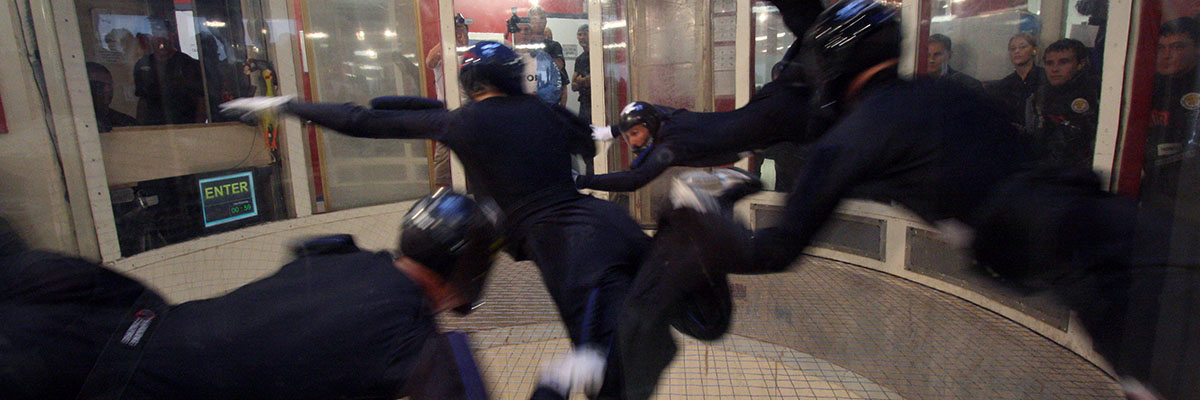Key? Key to what?
Monday, December 28, 2020

When a formation is complete, a signal is needed to indicate it is time for the team to break and move to the next point. Who does it? How do you do it? When do you do it? Can I have all the keys?!?!? Read on to find out!
Nailed it. Next!
The primary purpose of assigning a key person is to ensure that the team shows the proper formation. This skydiver should be able to see and feel all the necessary grips from his or her position.
To help with this, the key person can develop a checklist of grips to notice. After many skydives, this checklist becomes natural and automated. You can skip to this automated stage sooner by checking things uniformly and methodically. An example of a Murphy Flake checklist for the inside center could be:
- See Christy’s grip on Josh’s leg
- Feel Uli catting me
- Have both of my grips
When all of these criteria are met, it is time to key. The order these events may vary each time. However, keep the checklist in the same order when you start. Consistency will develop that mechanical feeling faster.
Ready for some cheese? It’s Nacho key.
If you are using a set continuity plan, they will suggest who has the key. If you are unsure, it is always someone who can see and feel the entire formation. For 4-way that person is almost always the Inside Center.
Decide on the ground who is going to have the key. Then execute all of your ground preparation by giving this person the responsibility.
Complete is not ready
Completion is a minimum requirement for keying, but not the only need. The best time to give a key is when everyone is prepared. There are times when a flyer is straining for a grip, is unbalanced, or recovering from brain locking. Even though the formation is technically built, it is often best to ‘squeeze’ the point for a moment and allow everyone to recover. Everybody should be primed for the next move, not struggling and feeling behind.
Pace yourself
In 4-way, the Inside Center has the most keys. A single person keying gives them the ability to maintain, speed up, or calm down a skydive. This responsibility requires that the inside center has an awareness of their teammates’ arousal level and needs.
Community Keys
Community or cosmic keys are when anyone is allowed to key a formation. This would occur when every flyer has a clear view of all grips. Done well it can build anticipation and lead to a faster jump.
While this can produce a faster key, it has a downside. Shifting keys between people on a skydive can make the jump harder to steer. The dominant keyer has to work to achieve a smooth predictable pace. By adding community keys, the team is interrupting the rhythm the Inside Center is trying to produce. Done poorly it can create manic and unpredictable jumps.
Discipline and Anticipation
Just because you don’t have a key, doesn’t mean you are off the hook. It is everyone else’s job to wait for the key, and react to it when it comes. Even if you think you can see the whole formation complete, don’t budge until the key comes.
You should also develop anticipation for the key. If you are looking and communicating, you will know when to expect the signal and won’t be caught off guard. Know who has the key so you are ready to spring to the next point.
If the key person makes a mistake, and you don’t have your grip, be ready to drop everything and fake it. This practice will keep the synchronicity and avoid confusion. Sometimes the video won’t even show the infraction, and you’ll score the point anyway.
Perfect Practice on the Ground
Your team must practice key discipline right from the start of the season. Force yourself to respect this discipline on every walkthrough, creeping session, and jump. If someone is habitually busting a key, make sure it is addressed and corrected. Much of this is muscle memory, so avoid practicing bad habits.
Now that you know what a key is, who does it, and how to execute it, rock on with your skydive! Book some tunnel time below, and Christy will do her best not to steal your keys.
Related
8-way Basics: Shared Keying
Tags: technique



